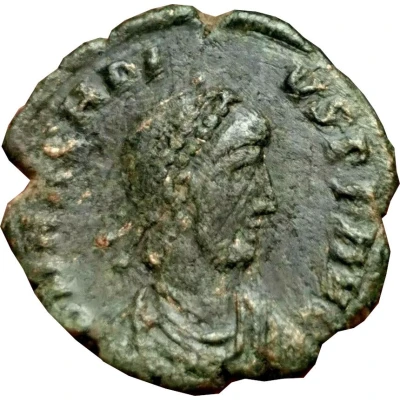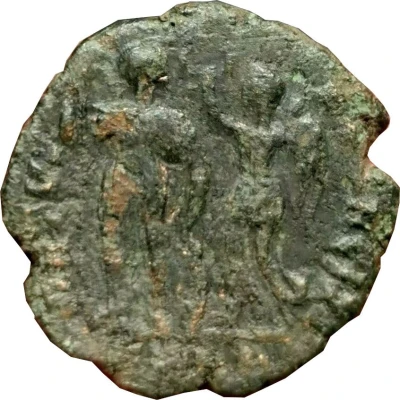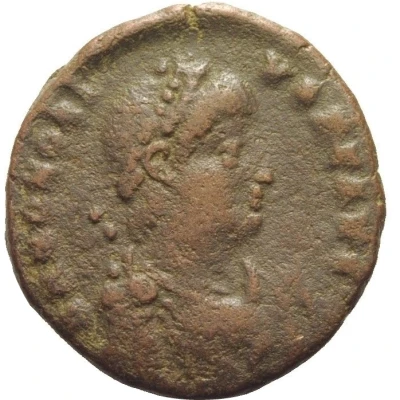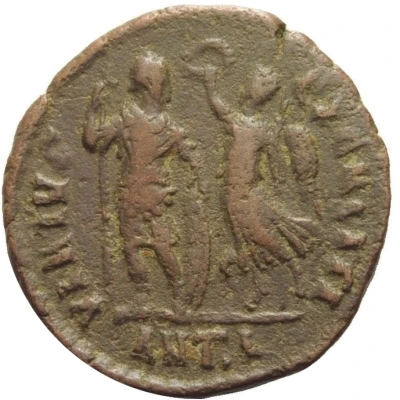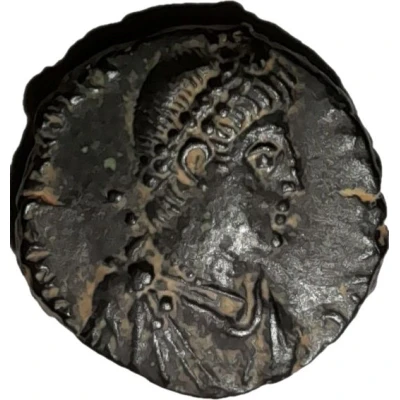
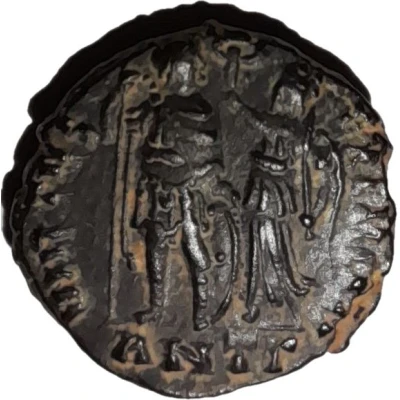

© pimmy (CC BY-NC-SA)
Follis - Arcadius VIRTVS EXERCITI; Antioch
| Bronze | 2.95 g | 16.5 mm |
| Issuer | Eastern Roman Empire (Rome) |
|---|---|
| Emperor | Arcadius (383-408) |
| Type | Standard circulation coin |
| Years | 395-401 |
| Value | 1 Follis (1⁄180) |
| Currency | Solidus (330-476) |
| Composition | Bronze |
| Weight | 2.95 g |
| Diameter | 16.5 mm |
| Shape | Round (irregular) |
| Technique | Hammered |
| Orientation | Variable alignment ↺ |
| Demonetized | Yes |
| Updated | 2024-10-10 |
| Numista | N#62624 |
|---|---|
| Rarity index | 66% |
Reverse
Emperor standing left, head right, holding spear and resting left hand on schield. Victory holding palm branch in left hand, crowns him.
Script: Latin
Lettering:
VIRTVS EXERCITI
ANTB
Edge
Rough
Interesting fact
The Follis coinage was introduced by Arcadius in 395 AD as a replacement for the older nummi coinage. The Follis coin was made of bronze and had a larger diameter than the nummi, but it was also much lighter, weighing only 2.95 grams. Despite its light weight, the Follis coin was still widely used throughout the Eastern Roman Empire and remained in circulation for many centuries. It's interesting to note that the Follis coinage was introduced during a time of economic and political instability in the Eastern Roman Empire, and it was likely intended to address some of the economic challenges of the time. Despite these challenges, the Follis coinage remained a standard part of the Empire's currency system for many years, and it provides a fascinating glimpse into the economic and monetary history of the period.
